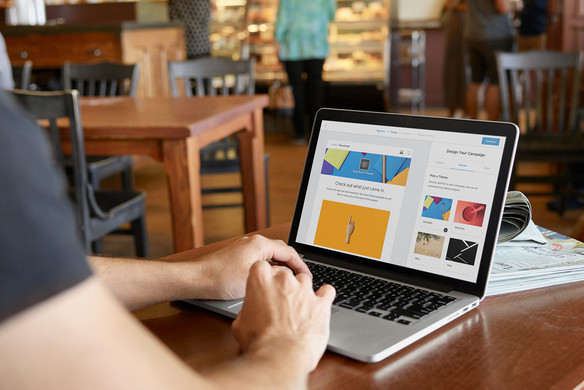Table of contents
Just as the name implies, a call to action, or CTA, invites your customers to take some kind of action. Email CTAs can make or break your clickthrough rates, but don’t worry. We’ll go over what makes a strong CTA and how you can measure if your CTAs are successful.
Get Started with Square Email Marketing
Email marketing software that turns occasionals into regulars
What is a call to action?
A call to action (CTA) is usually a button or linked text that asks your audience to take a specific action. For example, “Start Your Free Trial Now” has all the components of a strong CTA: verb (start) + adjective (free) + noun (trial) + time (now). Of course, you don’t have to have all of those components for every CTA. A simple “Sign Up” works as a CTA if you’re asking your customers to sign up for new product announcements.
Email CTAs can be an integral part of your sales process. With a strong CTA, you can encourage customers to click through to your website and purchase your products. If your CTA doesn’t tempt your customers to click through to make a purchase, take advantage of a coupon, or sign up for a new service, your CTA isn’t doing its job.
Creating great email CTAs
When you create your own email CTA, start with your end goal in mind. What next action do you want your audience to take? Do you want them to buy your product? Then “Buy Now” might work for you as a CTA. Do you want them to learn more about your product? Then a simple “Learn More” could be the right CTA. Or do you want your customers to go through a sign-up flow? If so, “Get Started” is a good option.
A “Buy Now” CTA in your email without any other information about your product might feel like too much of a commitment for your customers. This may seem obvious, but it is worth mentioning that you should highlight the strengths of your product before your CTA, enticing your customers to click through. That being said, a “Buy Now” CTA is direct, clear, and concise, all of which are key parts to a strong CTA.
You could also use a CTA that encourages customers to take action offline. A CTA might drive customers into your store to check out a sale, ask them to sign up for an in-person event, or offer tickets to a special show.
Measuring the success of your email CTAs
So you’ve written and sent out email with your new strong CTAs. How do you know if your CTAs are working? Your clickthrough rates and click to open rates tell you how well your email CTAs are performing.
But let’s back up for a minute. What is a clickthrough rate? A clickthrough rate is the percentage of people who opened your email and then clicked your CTA. The average clickthrough rate is 3.4 percent, according to GetResponse. So if your clickthrough rate is 3.4 percent or higher, your CTAs are performing well.
A click to open rate measures what percentage of people who were sent your email clicked the CTA. This is an overall measure of an email’s success. An average click to open rate is 20 to 30 percent.
You can find your clickthrough rate in your Square Marketing dashboard. Divide your number of clicks by the total number of people who received the email for the clickthrough rate. To find the click to open rate, divide the number of clicks by the number of emails opened.
![]()











